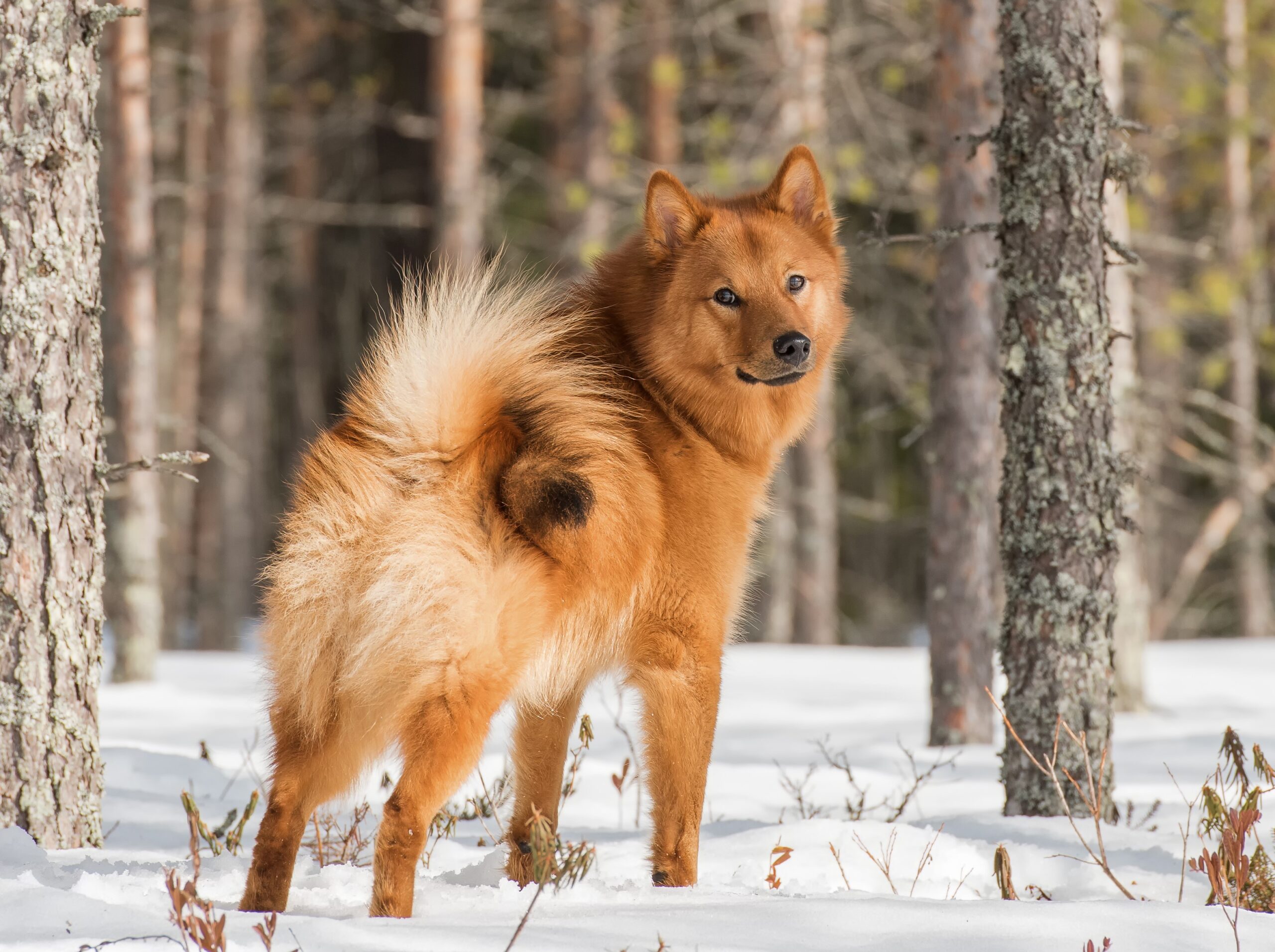The Finnish Spitz is the national dog of Finland, originally used for tracking elk, bear, and hunting game.
This lively medium-sized hunting dog is distinguished by its foxy face, pricked ears, plumed tail and dense flame-coloured coat. It has a sturdy frame and a brisk, dainty gait. They were bred to use their bark to signal when they had found game and, as such, they are vocal dogs with a distinct ringing bark and yodel. This makes them particularly good guard dogs as they are likely to alert their owner to strangers. The Finnish Spitz is however a friendly and good-natured dog, that enjoys the company of its owners. Tolerant and playful too, the Spitz makes a good companion for children and generally gets on well with other dogs and household pets. This is a dog that requires plenty of exercise, as well as daily grooming to keep its heavily shedding fur in good order. For the owner or family that has the time to offer plenty of opportunities to exercise, and can put up with a lot of fur and above-average barking, they will be rewarded with a stunning-looking, devoted and fun companion.

History
The national dog of Finland, the Finnish Spitz, has been in Scandinavian history for many centuries. It is thought to descend from early hunting dogs from Lapland and Scandinavia and was used first to track elk and bear and later to hunt game. They would signal to hunters where the game was by barking and are often referred to as the barking bird dog.





